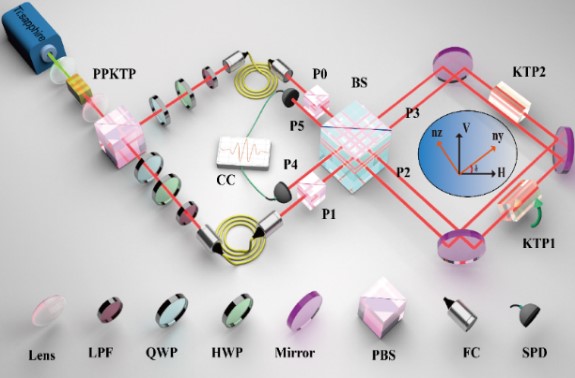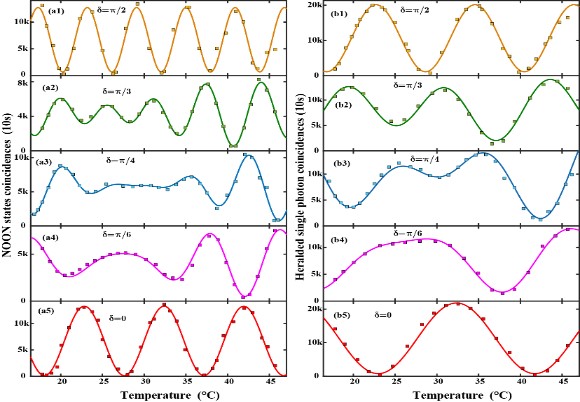The CAS Key Laboratory of Quantum Information, led by academician GUO Guangcan, has achieved significant progresses in theoretical and experimental study of photon interference in a birefringent interferometer, Prof. SHI Baosen, Associate Researcher ZHOU Zhiyuan and their collaborators construct a quantum optical model for a birefringent interferometer and reveal the interference behavior of photons in this interferometer for the first time, the experimental demonstration agree very well with the theoretical predictions. The main results have been published in journal “Physical Review Letters” [Phys. Rev. Lett. 120, 263601(2018)].
Interferometer is an indispensable tool for modern science and technology, which has been widely used in optical researches and other scientific fields. The fundamental understanding of photon interference has been debated since Dirac. In Dirac’s viewpoint, a photon can interfere only with itself. Such a viewpoint encounters some problems when one explains two-photon interference generated from spontaneous parametric down-conversion process. Later, physicists updated Dirac’s viewpoint as a pair of photons interferes only with the pair itself. Once we know how a photon behaves in a certain interference process, we can better apply this behavior for high precision metrology based on photon interference. Measurements of most physical quantities, including position, angle, optical dispersion, and temperature, often depend on decoding parameters from specific interference fringes or patterns. How to obtain stable interference fringes and obtain more parameters in a single interference fringe is the long pursued aim in interference based precision optical metrology.
Prof. SHI Baosen, Associate Researcher ZHOU Zhiyuan and their collaborators construct the general quantum optical model for a birefringent interferometer first, then they design a passively stable Mach-Zehnder interferometer (MZI) to demonstrate the theoretical predictions. Two KTP crystals are inserted in two arms of the MZI, one for phase compensate and the other one as a sample for testing. They use a self-developed high brightness telecom band photon source as an input light source [Opt. Express 23, 28792 (2015)] to study both two-photon and single photon interference behaviors. They find that for both cases, one can observe the temperature beating fringes depending on the rotation angle of the sample in testing, furthermore, the two photon interference fringes beat 2 times faster than the single-photon interference fringes, which shows super-resolution in phase measurement for two-photon input case. Through the beating curve, they can determine the thermal dispersion coefficients for both optical axes of the KTP crystal with a single interference fringe. In addition, they also study the influence of the polarization decoherence to the interference fringes, they find that the polarization decoherence increases with the increasing of photon bandwidth, which results in decrease of interference visibilities for both single and two-photon input cases. The experimental observations are in perfect agreement with the theoretical predictions.

Figure 1. Experimental setups for the experiments.

Figure 2. two-photon and single photon temperature beating curves at different rotation angles. Left column of figures are for two-photon input case; right column the corresponding single photon input case.
Finally, they point out that for single photon beating phenomena is not limited with true single photon input, the same results can be observed with lasers, this fact would have great benefit in practical measurement applications. Moreover, the theoretical model can be extended for measuring the wavelength dispersion and electro-optical coefficient of the birefringent crystal. Therefore, this work will be of great importance for understanding the nature of photon and for precision optical metrology.
This work is supported by the National Natural Science Foundation of China (NSFC); the National Key Research and Development Program of China; the Anhui Initiative In Quantum Information Technologies; the China Postdoctoral Science Foundation; and the Fundamental Research Funds for the Central Universities
Article link:https://journals.aps.org/prl/abstract/10.1103/PhysRevLett.120.263601
(School of Physical Sciences,USTC)
